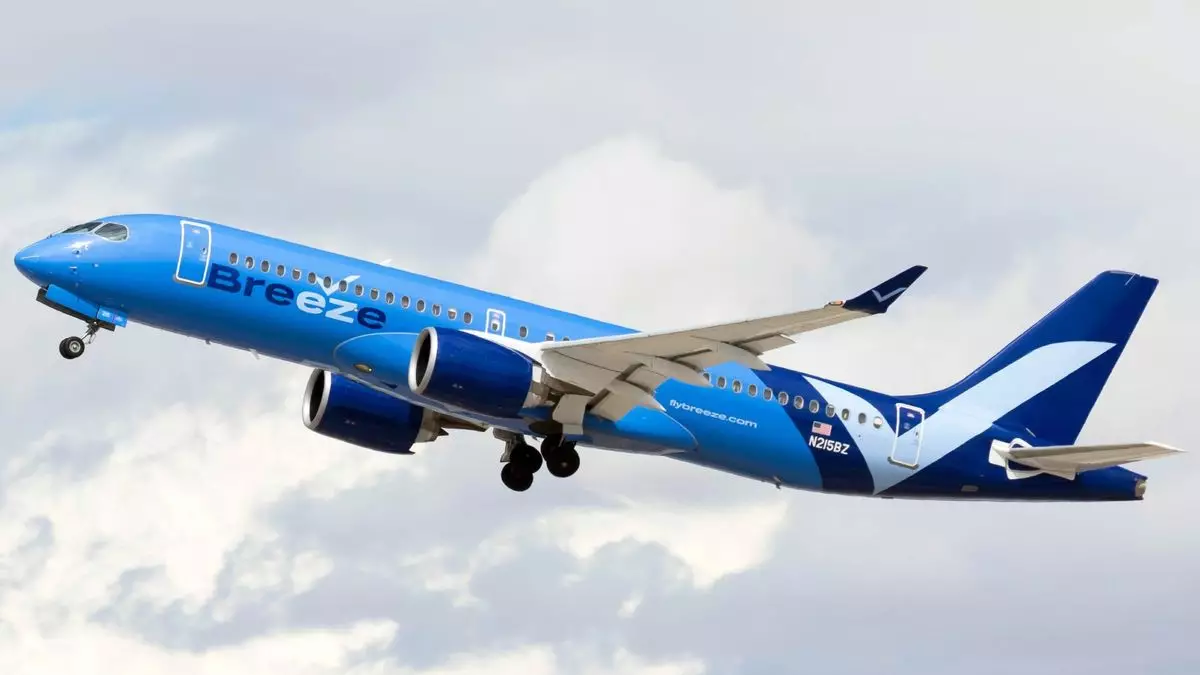Breeze Airways, a low-cost airline that commenced operations in May 2021, has experienced a tumultuous journey towards profitability. As of January 2024, the airline announced its first quarterly operating profit, indicating a potential turning point under the leadership of CEO David Neeleman. Despite a challenging start, which saw the airline facing significant losses, the recent financial report has sparked optimism for the future. In a rapidly evolving aviation landscape, Breeze’s journey exemplifies the trials and triumphs low-cost carriers often encounter.
Breeze Airways recorded over $200 million in revenue during the fourth quarter of 2024, achieving an operating margin exceeding 4%. While the company has yet to disclose specific profit figures, Neeleman has characterized this milestone as “pretty significant.” This is especially poignant given the airline’s negative operating margin of 25.9% just one quarter prior. The airline’s financial resurgence can be attributed in part to rising airfares and a broader industry upswing. However, it also suggests that the company’s business model—designed to connect underserved city pairs—may finally be resonating with travelers.
In the fiercely competitive airline industry, staying power is critical for success. Breeze has expanded considerably over the past year, adding 29 new destinations to bring its total to 66. This growth, accompanied by a remarkable 52% increase in capacity in 2024, reflects a strategic focus on enhancing service and maintaining customer loyalty. Although the airline plans to grow its capacity by an additional 25% this year, the emphasis will shift towards strengthening existing connections rather than aggressively seeking new markets. This strategy could set the stage for Breeze to establish itself further within the current aviation ecosystem.
Breeze Airways operates on a unique model that focuses on smaller airports with minimal competition, allowing it to carve out a niche. The airline claims to be the leading carrier in 24 of its 66 destinations and operates as the sole carrier for an impressive 87% of its over 200 routes. However, maintaining this competitive edge requires not only effective operational strategies but also overcoming various industry hurdles. Regulatory challenges regarding pilot training for its Airbus A220 fleet and delivery delays have previously hindered its growth and fiscal health. As a result, Neeleman acknowledges that while significant strides have been made, there is still considerable work ahead.
For 2024, Breeze plans to tackle two crucial initiatives that could significantly enhance its market position: securing FAA authorization for international flights and improving on-time performance metrics. The airline aspires to launch international routes to destinations in Mexico, Central America, the Caribbean, and possibly even Ireland. Furthermore, the aim to enhance on-time performance—currently sitting at 69.6%—will be a key focus, as operational reliability becomes increasingly essential in attracting and retaining customers.
While the optimism surrounding Breeze’s profitability is encouraging, industry analysts like Brett Snyder warn of the precarious nature of airline funding. Investors’ patience can wane quickly, especially if losses continue. Breeze, although having bolstered its cash reserves to a healthy level of around $110.7 million post-third quarter 2023, must remain agile and responsive to market conditions. Neeleman’s tenure in the airline industry, including the successful launch of JetBlue, adds credibility to his leadership; however, the financial stakes demand careful navigation.
As Breeze Airways turns the corner in its journey toward profitability, there is cautious optimism among industry observers and stakeholders alike. The airline’s recent financial performance and growth strategies illustrate its potential to thrive in the competitive airline sector. While challenges remain, particularly concerning regulatory hurdles and performance benchmarks, the groundwork has been laid for Breeze to continue expanding its network and solidifying its presence in the aviation market. David Neeleman’s sentiments reflect a broader hope for the airline: “I’m happy where we are today.” And this sentiment may well be the first step towards a promising future in the skies.

